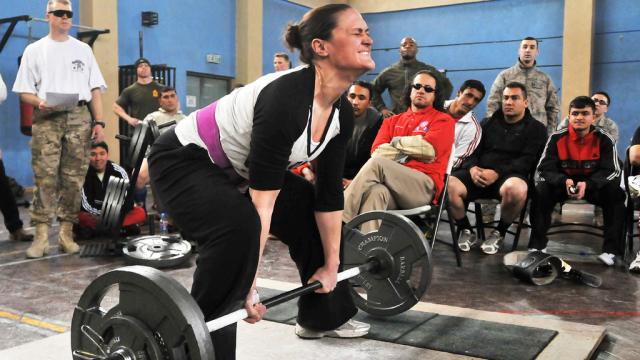Many of us probably don’t work as hard as we could, but it’s not always easy to tell. The RPE (Rate of Perceived Exertion) scale helps with that. After all, sometimes fitness isn’t just about how much weight you lift, how many kilometres you run or even how many calories you burn. It’s about how hard you can work during that weight lifting session, that run or that spin class.
Image by ResoluteSupportMedia.
The RPE scale challenges you to gauge how hard you think you’re pushing yourself, based on a numeric scale. The American College of Sports Medicine defines RPE as “feelings of effort, strain, discomfort, and/or fatigue experienced during both aerobic and resistance training“, but uses a scale of 6-20.
Strength coach Mike Robertson uses a more practical 1-10 scale, with slightly more concrete differentiation on the higher end, that you can apply as well.
RPE of 10 — Max effort/limit lift. This is either one heckuva grinder, or they flat out miss a lift.
RPE of 9 — Heavy lift, but one rep left in the tank.
RPE of 8 — Heavy(ish) lift, but two reps left in the tank.
RPE of 7 — Moderate weight, multiple reps left in the tank
It might remind you of the pain chart at a doctor’s office: on a scale of 1-10, how hard do you think you’re working? In other words, measure your perceived intensity, with one being “Wow, I can do this in my sleep,” to five feeling like “OK, it’s getting pretty warm in here…” to a 10 that’s essentially “@$%#! asdsfgjffffff.”
It’s not perfect, but it can help someone better modulate their workout intensities based on how she feels. Plus, it’s a great encouragement to aim to hit an attainable “intensity” goal.
Intensity is relative and subject to many variables. As Robertson mentions: “It’s not just about the weight on the bar, but how the weight on that bar feels right now.”
Everything You Need to Know About RPEs [Robertson Training Systems]

Comments